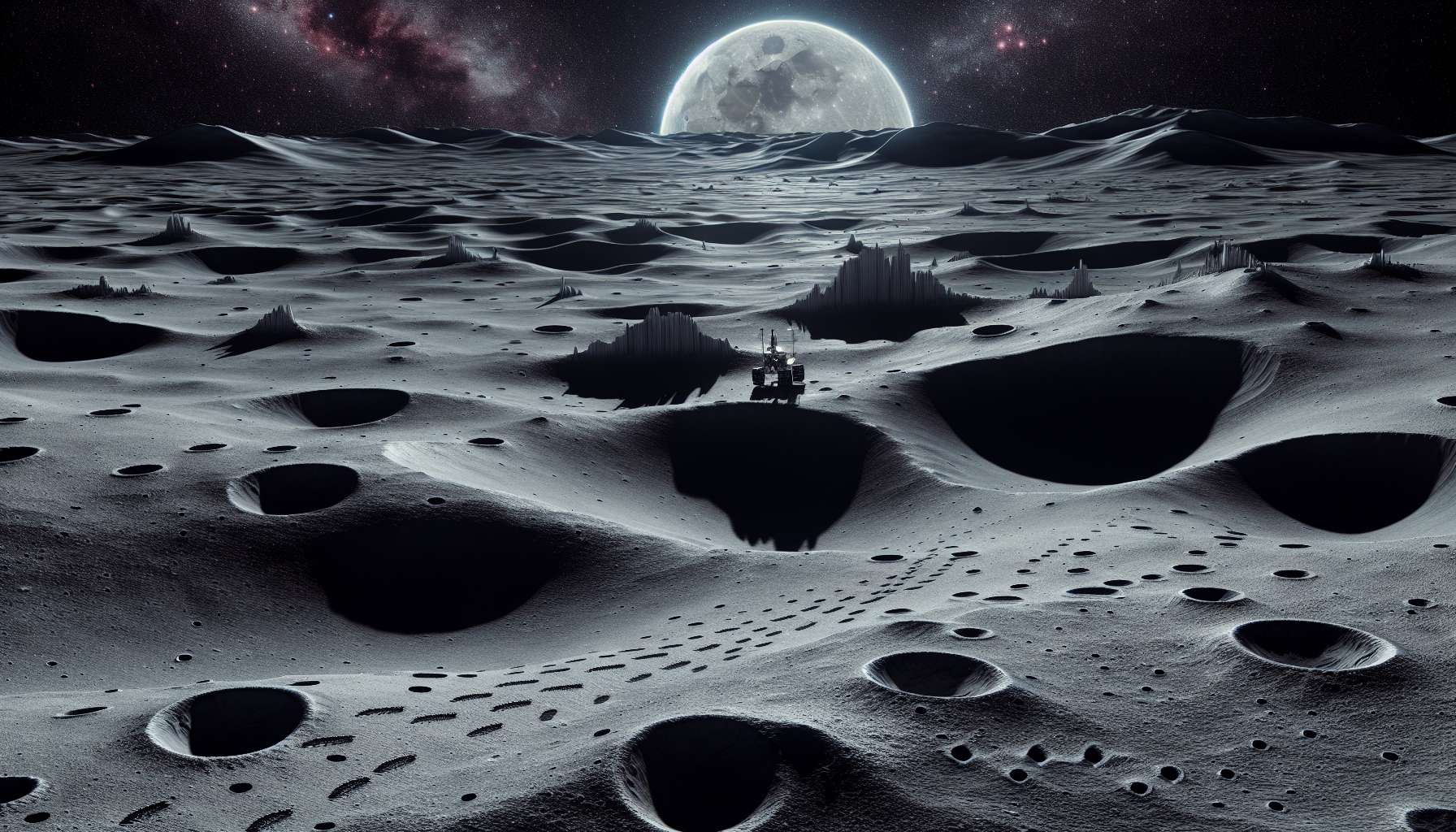The Exploration of Lunar Landscapes: A Journey Beyond Earth
Welcome, fellow space enthusiasts, to a fascinating journey into the exploration of lunar landscapes! The moon, Earth’s only natural satellite, has captivated humanity for centuries with its beauty and mystery. In recent decades, significant advancements in technology and space exploration have allowed us to delve deeper into the secrets of the lunar surface. From the Apollo missions to modern-day robotic explorers, humans have made remarkable progress in uncovering the mysteries hidden within the vast expanse of the moon.
As we embark on this exploration of lunar landscapes, we will discover the history, significance, current endeavors, and future implications of studying the moon’s terrain. Join us as we dive into the intricate world of lunar exploration, where science fiction meets reality, and the boundaries of human knowledge are constantly pushed to new frontiers.
The Historical Legacy of Lunar Exploration
The exploration of lunar landscapes dates back to ancient civilizations, where the moon held symbolic significance in religious beliefs, calendars, and folklore. However, it was not until the 20th century that humans began to physically explore the lunar surface.
The Apollo missions, particularly the iconic Apollo 11 in 1969, marked a significant milestone in human history as astronauts Neil Armstrong and Buzz Aldrin became the first humans to set foot on the moon. The images and samples collected during these missions provided invaluable insights into the moon’s geology, composition, and history.
Following the Apollo program, various unmanned missions, such as the Lunar Reconnaissance Orbiter and the Chang’e missions by China, have continued to enhance our understanding of lunar landscapes. These missions have mapped the moon’s surface, identified potential landing sites for future missions, and studied the moon’s water resources.
Advancements in Lunar Exploration Technology
Modern advancements in technology have revolutionized the way we explore lunar landscapes. Robotic rovers, such as NASA’s Lunar Rover and China’s Yutu rover, have been instrumental in conducting detailed surface studies, collecting samples, and transmitting data back to Earth.
The development of CubeSats and small satellites has allowed for cost-effective and efficient missions to the moon, enabling a wider range of countries and organizations to participate in lunar exploration. These small spacecraft can conduct various scientific experiments, observe the moon’s surface, and test new technologies for future missions.
Furthermore, advancements in propulsion systems, communication technologies, and autonomous navigation have increased the capabilities of lunar missions, paving the way for more ambitious projects, such as establishing a lunar base or mining resources on the moon.
The Significance of Lunar Landscapes Exploration
Studying lunar landscapes is crucial for understanding the history of the solar system, as the moon preserves a record of cosmic events that have shaped our planet and neighboring celestial bodies. By analyzing lunar rocks and craters, scientists can unravel the mysteries of the moon’s formation, evolution, and geological processes.
Moreover, lunar exploration provides valuable insights into space weathering processes, impact cratering, and the potential for resources such as water ice and minerals on the moon. These resources could be crucial for future human missions to the moon and serve as stepping stones for further exploration of the solar system.
Additionally, studying the moon’s geology and environment can help scientists better understand Earth’s own history, climate changes, and potential hazards, such as asteroid impacts. By comparing Earth and the moon, researchers can gain a deeper understanding of planetary evolution and the interconnectedness of celestial bodies within the solar system.
Future Implications of Lunar Landscapes Exploration
The future of lunar exploration holds exciting possibilities for humanity’s expansion into space. NASA’s Artemis program aims to return humans to the moon by 2024, establishing a sustainable presence and preparing for future missions to Mars and beyond. Collaborative efforts between NASA, international space agencies, and commercial partners are expected to accelerate progress in lunar exploration and pave the way for long-term human habitation on the moon.
Furthermore, the development of lunar infrastructure, such as lunar bases, habitats, and resource utilization technologies, could open up new economic opportunities in space, including mining, tourism, and scientific research. Private companies like SpaceX, Blue Origin, and Astrobotic are already investing in lunar missions and planning to capitalize on the potential resources available on the moon.
Ultimately, the exploration of lunar landscapes represents a crucial stepping stone in humanity’s quest to explore and colonize space. By establishing a sustainable presence on the moon, we can develop the necessary technologies, infrastructure, and knowledge to venture further into the cosmos, unlocking the mysteries of the universe and ensuring the survival of our species beyond Earth.
Expert Opinions on Lunar Landscapes Exploration
Renowned astrophysicist Dr. Neil deGrasse Tyson once remarked, “Exploring the moon is not just about rocks and craters; it’s about unlocking the secrets of our cosmic origins and preparing for a future beyond Earth. The moon is a gateway to the stars, and by studying its landscapes, we can learn more about our place in the universe.”
Dr. Carolyn Porco, a planetary scientist and imaging expert, added, “Lunar exploration is essential for understanding the history of our solar system and the potential for life beyond Earth. By studying the moon’s landscapes, we can piece together the puzzle of planetary evolution and explore the possibilities of life elsewhere in the cosmos.”
Common Misconceptions about Lunar Landscapes Exploration
One common misconception about lunar exploration is that it is merely a rehash of past missions and does not offer any significant scientific advancements. In reality, modern lunar missions are pushing the boundaries of knowledge and technology, uncovering new discoveries and paving the way for future space exploration.
Another misconception is that the moon is a barren wasteland with nothing of value to offer. However, recent studies have revealed the presence of water ice in lunar craters, potential resources for fuel, drinking water, and life support systems for future lunar inhabitants. The moon holds untapped potential for scientific research, economic development, and human settlement.
Conclusion: Unveiling the Mysteries of Lunar Landscapes
To wrap things up, the exploration of lunar landscapes represents a thrilling journey into the unknown, where science, imagination, and ambition converge to unlock the secrets of our celestial neighbor. By studying the moon’s geology, environment, and resources, we gain valuable insights into the history of our solar system, the potential for human colonization, and the wonders of the cosmos.
As we continue to push the boundaries of lunar exploration, let us remember the words of poet Carl Sagan, “Somewhere, something incredible is waiting to be known.” The moon, with its rugged terrain, ancient craters, and silent beauty, holds the key to a future beyond Earth, where humanity’s dreams of space exploration can become a reality.




